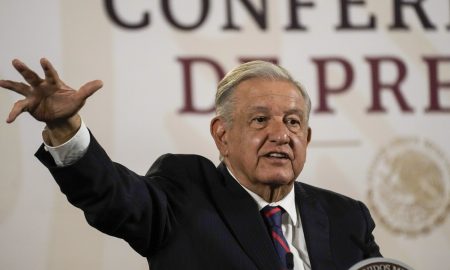
Four Years Post-COVID: Pioneering Efforts to Outsmart Future Pandemics

Imagine waking up to a world where strange viruses pop up, threatening our well-being. That’s what happened in 2020 with the onset of COVID-19. Fast forward four years, and scientists like Dr. Ian Lipkin from Columbia University are on a mission to prevent the next global pandemic.
GAPP: A New Shield Against Viral Threats

Instagram | Early detection and notification can halt outbreaks before they spiral into global crises.
Dr. Lipkin and his team at the Mailman School of Public Health have pioneered a revolutionary system called GAPP. This Global Alliance for Preventing Pandemics acts like a global immune system, swiftly analyzing viruses, bacteria, and fungi found in patients. Here’s how it works:
- Simple and Inexpensive: GAPP’s assays are easy to use and cost-effective, allowing continuous surveillance in clinics, analyzing blood, sewage, and respiratory samples.
- Rapid Public Information: GAPP involves eight countries committed to sharing information rapidly. Early detection and notification can halt outbreaks before they spiral into global crises.
The 2% to 3% Chance: The Looming Threat of Future Pandemics
According to Nita Madhav from Ginkgo Bioworks, there’s a 2% to 3% chance of another global pandemic annually for the next 25 years. The odds might seem low, but the impact can be catastrophic. Madhav emphasizes the need for constant monitoring, even in “normal” times.
This vigilance is crucial because it’s not just about detecting big threats; it’s also about noticing subtle changes that could signal something brewing. In essence, keeping an eye on these changes is like having a weather radar for potential health storms. By staying alert and proactive, we can better protect our communities and the world at large from future health crises.
Gingko Bioworks: Eyes on the Skies and Beyond

Freepik | DCStudio | Sustaining biosecurity infrastructure preventing a lapse in vital systems.
Gingko Bioworks is taking prevention to new heights, literally. Under government contract, they analyze airplane wastewater at international airports, keeping an eye on potential pathogens. They’re also establishing biosecurity programs globally.
- Constant Monitoring: Gingko believes in constant surveillance, establishing baselines to better understand what’s out of the ordinary.
- Sustainable Funding: Madhav stresses the importance of sustaining biosecurity infrastructure beyond the current pandemic, preventing a lapse in vital systems.
Training for Global Preparedness: GAPP’s Impact Worldwide
Dr. Lipkin and his team are revolutionizing global health security by equipping nations around the world with the power of knowledge. Through comprehensive three-week training sessions, they’re transforming public health workers from a diverse range of countries, from Mexico to Zambia, into skilled pathogen detectives.
This initiative is rooted in the principle of self-reliance, enabling these nations to swiftly identify and respond to health threats without being dependent on international assistance. The success of the Global Alliance for Preventing Pandemics (GAPP) program is evident in its growing popularity, with an increasing number of countries from regions like Africa, the Americas, Central Asia, and the Pacific eagerly joining to enhance their own capabilities.
The Broad Institute’s Sentinel Program: Tracking Hemorrhagic Fevers
Al Ozonoff, the U.S. director for the Sentinel program, describes their mission as akin to constructing a worldwide immune system, primarily tracking hemorrhagic fevers such as Ebola and Lassa. He notes that while these fevers might not seem as globally threatening as respiratory viruses, their risk is escalating due to climate change and increased human-animal contact.
Ozonoff underscores the significance of collaborative efforts in tackling these challenges. This approach was effectively demonstrated during the recent mpox outbreak, where several African nations united to combat the spread, illustrating the power of collective action in addressing health threats.
Freepik | jcomp | Al Ozonoff describes their mission as akin to constructing a worldwide immune system, primarily tracking hemorrhagic fevers.
Technological Marvels: Transforming Pandemic Preparedness
In the race against pandemics, technology is our ally. The falling cost of genetic sequencing is a game-changer, allowing us to track pathogens more efficiently.
- Data Revolution: The ability to track an immense amount of data and genetic sequences is crucial for a robust response to infectious diseases.
- Changing the Game: Technological advances could revolutionize how we approach all diseases, ushering in a new era of predictive healthcare.
Shaping a Resilient Future
As we navigate the next four years post-COVID, building a global immune system against pandemics becomes paramount. From GAPP’s rapid response to Gingko’s vigilant monitoring and the Sentinel program’s global tracking, the pieces are falling into place.
The key lies not just in reacting during crises but in establishing processes that work seamlessly in non-crisis times. It’s a collective effort, a symphony of nations working together to protect our shared future. The challenge isn’t just preventing the next pandemic; it’s ensuring that our collective global memory remains sharp and our immune system, both biological and technological, stays vigilant.
The stakes are high, but so is our resolve. Welcome to the age of proactive pandemic preparedness, where knowledge is power, collaboration is key, and our global immune system stands strong against the uncertainties of tomorrow.
More in News
-
`
The Remarkable Family of Musical Icon James Brown
James Brown, the “Godfather of Soul,” wasn’t just a musical legend; he was also a father to nine children, each woven...
February 27, 2024 -
`
A Red Monster’s Thoughtful Tweet Prompts an Outpouring of Emotion from Followers
Elmo was puzzled and amazed by the overwhelming response to a simple check-in tweet he posted yesterday morning. The post read,...
February 15, 2024 -
`
Jamie Lynn Spears Set To Appear on ‘I’m a Celebrity,’ Here’s How Much She is Paid for It
Jamie Lynn Spears, a well-known figure in the entertainment world, is currently in the news for a different reason. The well-known...
February 14, 2024 -
`
Greta Thunberg Marches Against ‘Private Jet Expansion’
In an impactful display of environmental advocacy, Greta Thunberg, the iconic Swedish climate activist, led a significant protest in Southern England....
February 7, 2024 -
`
5 Things You Need to Know About the New Star of “The Bachelor” Joey Graziadei
Joey Graziadei is not just the new face gracing your screens on “The Bachelor” Season 28. He is a beacon of...
February 3, 2024 -
`
8 Game-Changing Strategies for Skyrocketing Productivity in 2024
As the new year unfolds, it’s natural to feel the weight of expectations, especially when it comes to being productive. This...
January 24, 2024 -
`
Why You Should Be Careful Before Sending Your Pixel or iPhone for Repairing
There comes a time for every gadget-user when they have to send off their devices for repair. Sadly, this is an...
January 20, 2024 -
`
The Spears Sisters’ Controversy: Britney’s Response to Jamie Lynn’s ‘I’m A Celebrity’ Comments
The relationship between Britney and Jamie Lynn Spears has recently been in the spotlight due to public statements made by both...
December 31, 2023 -
`
Exploring Norway: Your Guide to the Most Scenic Flåm Railway Experience
Embark on a journey like no other, where nature’s grandeur meets the pinnacle of railway engineering. The Flåm Railway is a...
December 31, 2023















You must be logged in to post a comment Login